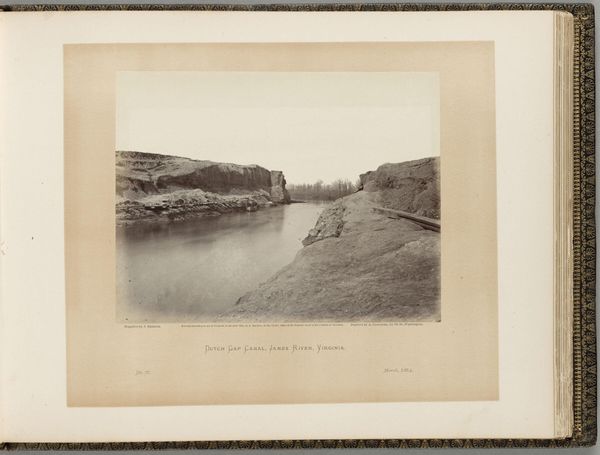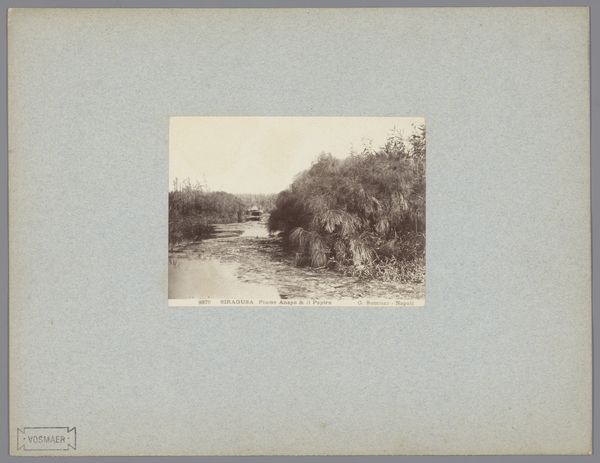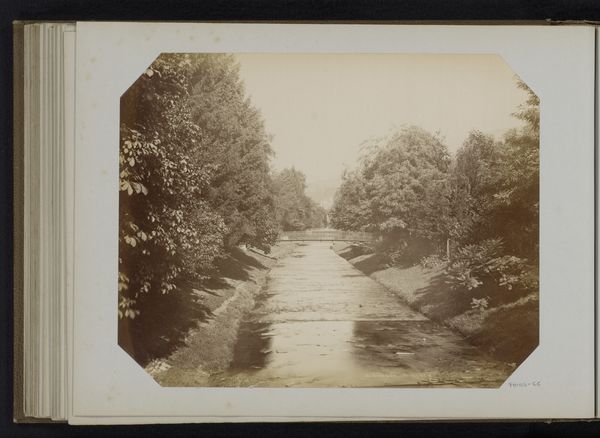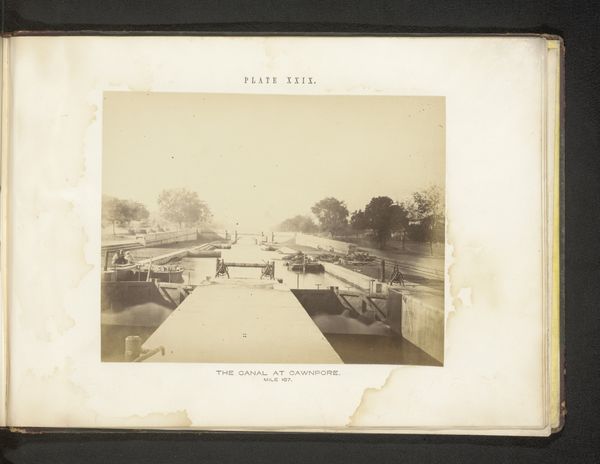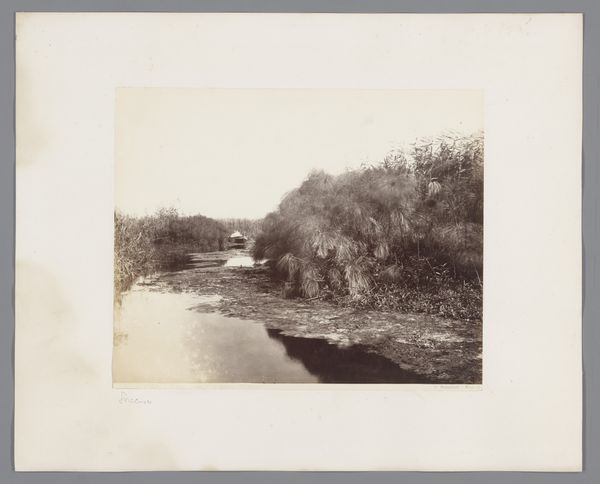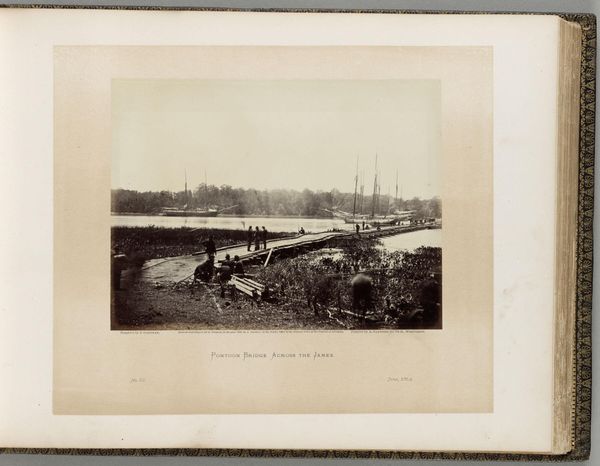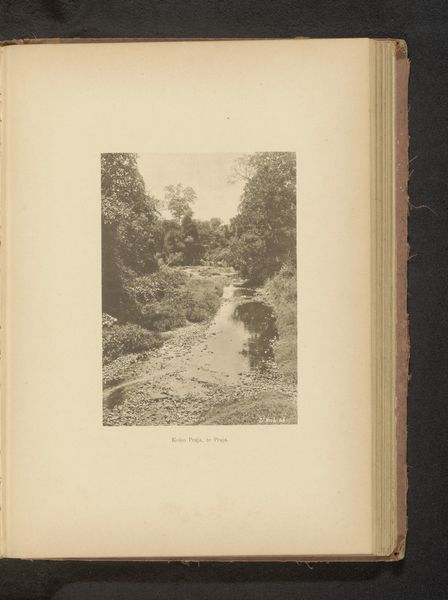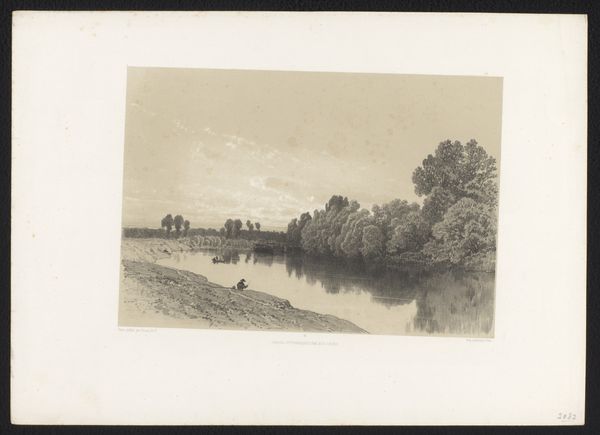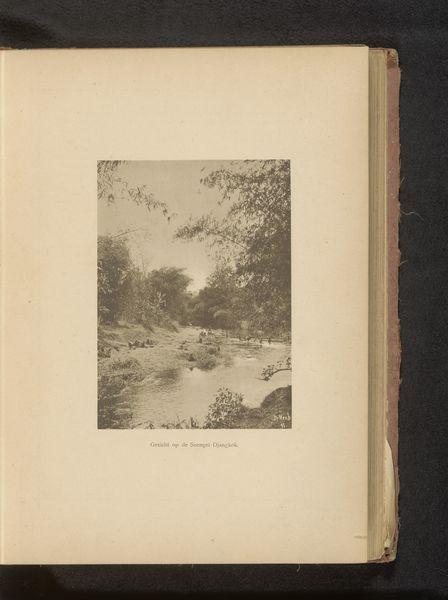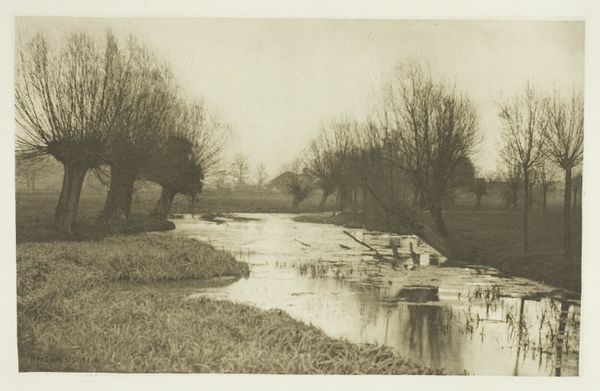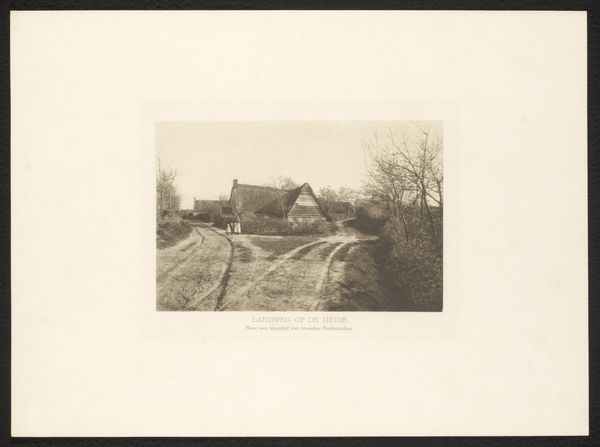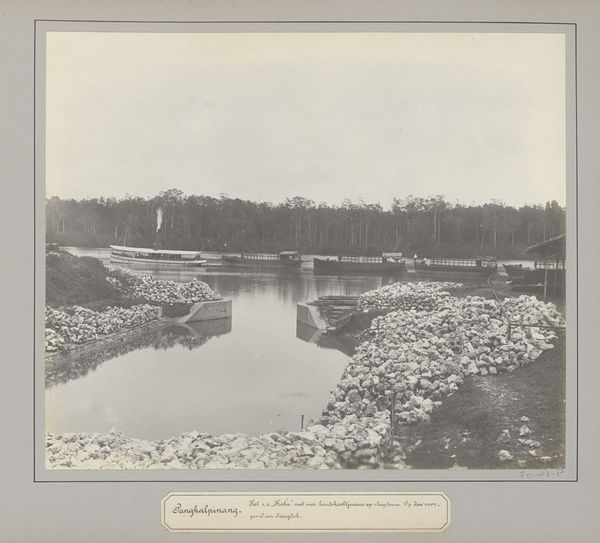
Dimensions: Image: 18.8 × 23.1 cm (7 3/8 × 9 1/8 in.) Mount: 26.9 × 34.7 cm (10 9/16 × 13 11/16 in.)
Copyright: Public Domain
Curator: Mathew Brady's gelatin-silver print, "Ruins of Stone Bridge - Bull Run," taken in 1862, presents us with a stark scene. What are your initial impressions? Editor: Immediately, I’m struck by the muted tonality, a pale palette that drains almost all vibrancy from the scene. The composition relies on the horizontal flow of the stream and the strong verticals of the ruined bridge supports, creating a somber, almost oppressive feeling. Curator: It’s hard to divorce the aesthetic from the historical reality here. This image depicts the aftermath of the First Battle of Bull Run, a devastating early engagement of the Civil War. Brady wasn’t just capturing a ruined bridge; he was documenting the brutal realities of a nation fractured, laying bare the consequences of violent conflict. Editor: The tonal range certainly enhances that reading. Note how the texture of the stone contrasts with the reflective quality of the water. Brady emphasizes the destructive force, doesn't he? How violence dismantles structure and transforms the landscape. Curator: Absolutely, but consider who "landscape" traditionally served in artistic representations. Here, that tradition is twisted. Instead of bucolic calm, we see trauma imprinted directly onto the land, forcing us to confront the war’s broader impact beyond the battlefield itself, the implications of which continue resonating through our society even now. The pale palette underscores the desolation, mirroring the shattered hopes and the pall cast over the nation. Editor: I agree, although I also see a visual strategy at play here. By muting the color, the image compels us to examine form and texture in painstaking detail: the roughness of the shattered stone against the water’s deceptive smoothness. It heightens our perception. Curator: And by focusing on a seemingly “empty” landscape, devoid of active combat, Brady subtly critiques the romanticized portrayals of war so prevalent at the time. It's not about glorifying heroism but confronting the enduring cost of conflict for all. It humanizes those that are gone. Editor: It’s a compelling point. I think whether one approaches this through the lens of its historical context or its formal composition, the photograph presents us with layers of understanding of war, both intimately human and profoundly destructive. Curator: Precisely. Viewing it with that intersectionality provides a crucial foundation.
Comments
No comments
Be the first to comment and join the conversation on the ultimate creative platform.
